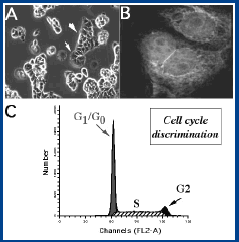Research and Training Materials

The Balanced Counseling Strategy Plus: A Toolkit for Family Planning Service Providers Working in High HIV/STI Prevalence Settings
The Population Council and partners developed The Balanced Counseling Strategy Plus: A Toolkit for Family Planning Service Providers Working in High HIV/STI Prevalence Settings (BCS+). This interactive tool is a client-friendly approach for improving counseling on family planning and prevention, detection, and treatment of sexually transmitted infections (STIs), including HIV. The toolkit, developed and tested in Kenya and South Africa, provides the information and materials needed for health care facility directors, supervisors, and service providers to implement the BCS+ in their family planning services. This toolkit includes:
- BCS+ Trainer’s Guide for supervisors to train providers on how to use BCS+.
- BCS+ User’s Guide on how to implement the Balanced Counseling Strategy Plus.
- BCS+ job aids:
- BCS+ algorithm that summarizes the 19 steps needed to implement BCS+ during a family planning counseling session. These steps are organized into four stages: pre-choice, method choice, post-choice, and STI/HIV counseling.
- 19 BCS+ counseling cards for use by providers.
- BCS+ method brochures on each of the 14 methods.
Adaptable to meet national and/or regional guidelines and protocols, hard copies of the BCS+ are available upon request from frontiers@popcouncil.org.
Working at the Cellular and Molecular Level
A half-dozen small, equipment-packed rooms form the “CellCore” of the Population Council’s Center for Biomedical Research (CBR) on the campus of The Rockefeller University. Shorthand for “Cell Biology and Flow Cytometry Core,” the CellCore provides technical services for CBR scientists, postdoctoral trainees, and research staff. Facility director Patricia L. Morris notes, “Having this centralized, specialized Cell Biology and Flow Cytometry Core facility enables Council investigators to minimize the use of animals in their experiments, ensures highest-quality, sterile culture-related reagents and supplies for their cell-based molecular biology work, reduces weekly expenses for associated materials and support personnel, and facilitates ongoing and new projects with its extensive cell repository and state-of-the-art, managed quality control and instrumentation.” To read the full text of this article, visit: http://www.popcouncil.org/publications/momentum/momentum1003_2.html
Human Breast Cancer Cells
Patricia L. Morris’s work on breast cancer cells is one example of the type of research facilitated by the Population Council’s Cell Biology and Flow Cytometry Core.

Photo credit: Population Council/ Morris Laboratory
Council Researchers Wrestle with SUMO
Little is understood about the molecular mechanisms that regulate sperm production—knowledge that would be key to the development of male contraceptives. Recent research conducted in the laboratory of Patricia L. Morris, a cell biologist and pharmacologist at the Population Council’s Center for Biomedical Research, suggests that a protein known as SUMO-1 is involved in numerous aspects of this process. Gaining a greater understanding of SUMO’s role in spermatogenesis (producing sperm), may lead to insights about male infertility and reveal potential targets for male contraception. To read the full text of this article, visit: http://www.popcouncil.org/publications/popbriefs/pb12(1)_5.html.
For more information about the work of Patricia L. Morris, visit: http://www.popcouncil.org/staff/bios/Morris_P/morris_p.bio.html.
Back to Population Council main page
Read about specific projects
Text and photos reprinted from the 2007 Population Council Annual Report and Momentum, December 2008.
